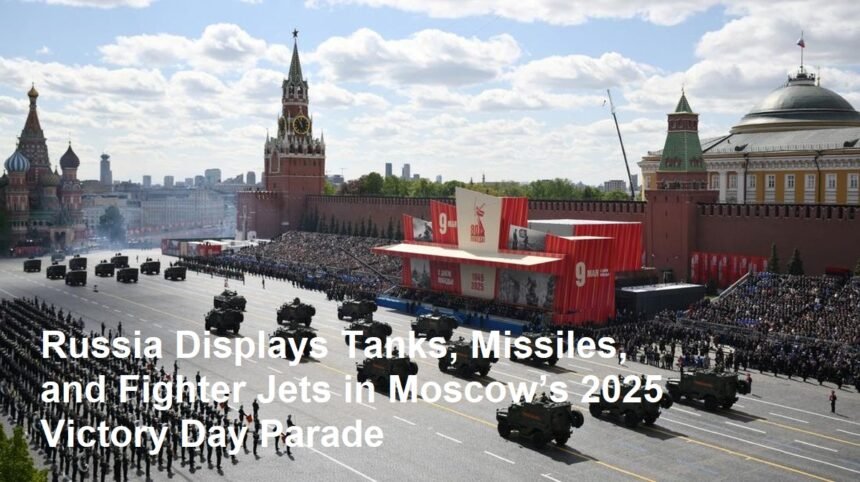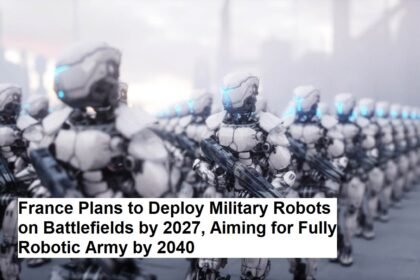On May 9, 2025, Moscow hosted its annual Victory Day Parade, a grand and highly symbolic event commemorating the Soviet Union’s victory over Nazi Germany in World War II. This parade, one of the most significant military displays in Russia, was led by President Vladimir Putin and featured an impressive showcase of Russia’s military capabilities, including tanks, missiles, and fighter jets. The event not only celebrated historical triumph but also served as a powerful demonstration of Russia’s current military strength and national resilience.
Victory Day, celebrated every year on May 9, holds deep cultural and historical importance in Russia. It marks the end of the Great Patriotic War, as World War II is known in Russia, and honors the sacrifices made by millions of Soviet soldiers and civilians. The parade in Moscow’s Red Square is the centerpiece of these commemorations, drawing thousands of spectators and broadcast worldwide. It is a moment of national pride, remembrance, and a reaffirmation of Russia’s military heritage.
The 2025 parade was notable for its scale and the advanced weaponry on display. Rows of modern main battle tanks rumbled through Red Square, showcasing the latest models equipped with cutting-edge technology. These armored vehicles symbolize Russia’s ground combat power and its ongoing efforts to modernize its military forces. Alongside the tanks, a variety of missile systems were paraded, including intercontinental ballistic missiles and tactical missile launchers, underscoring Russia’s strategic deterrence capabilities.
In the skies above Moscow, squadrons of fighter jets performed precise aerial maneuvers, thrilling the crowd and demonstrating Russia’s air superiority. These aircraft ranged from multirole fighters to advanced stealth models, reflecting the country’s investment in maintaining a technologically sophisticated air force. The flyovers are a traditional highlight of the parade, combining spectacle with a clear message of military readiness.
President Putin’s presence at the parade was a focal point, as he delivered remarks emphasizing Russia’s strength, unity, and resilience in the face of global challenges. His leadership during the event reinforced the parade’s role as a platform for projecting national power and political resolve. The timing of the parade, amid ongoing geopolitical tensions and conflicts, added layers of significance to the display, signaling Russia’s determination to assert its position on the world stage.
Beyond the military hardware, the parade featured thousands of troops marching in disciplined formations, representing various branches of the armed forces. Veterans of past conflicts were honored, and the event included ceremonial elements such as the laying of wreaths and moments of silence to remember those who lost their lives. These aspects highlight the parade’s dual nature as both a celebration of military might and a solemn tribute to history.
The Victory Day Parade also serves as a tool of domestic cohesion, fostering patriotism and national identity. It reminds citizens of Russia’s historical resilience and the sacrifices made to secure the country’s sovereignty. The grandeur of the event, combined with its deep symbolism, helps reinforce public support for the military and the government’s policies.
Internationally, the parade sends a clear message about Russia’s military capabilities and strategic intentions. The display of advanced weaponry and the scale of the event are closely watched by other nations, influencing geopolitical calculations and defense planning. In recent years, such parades have been interpreted as demonstrations of strength amid strained relations with Western countries and ongoing conflicts in regions like Ukraine.
In conclusion, the Victory Day Parade held in Moscow on May 9, 2025, was a powerful and multifaceted event. It honored the memory of past sacrifices while showcasing Russia’s modern military prowess. Tanks, missiles, and fighter jets paraded through the heart of the capital, symbolizing both historical victory and contemporary strength. Led by President Vladimir Putin, the parade reinforced themes of national pride, resilience, and readiness, resonating deeply within Russia and sending a clear signal to the international community. This annual tradition remains a cornerstone of Russia’s national identity and a vivid reminder of the enduring importance of military power in its geopolitical strategy.









